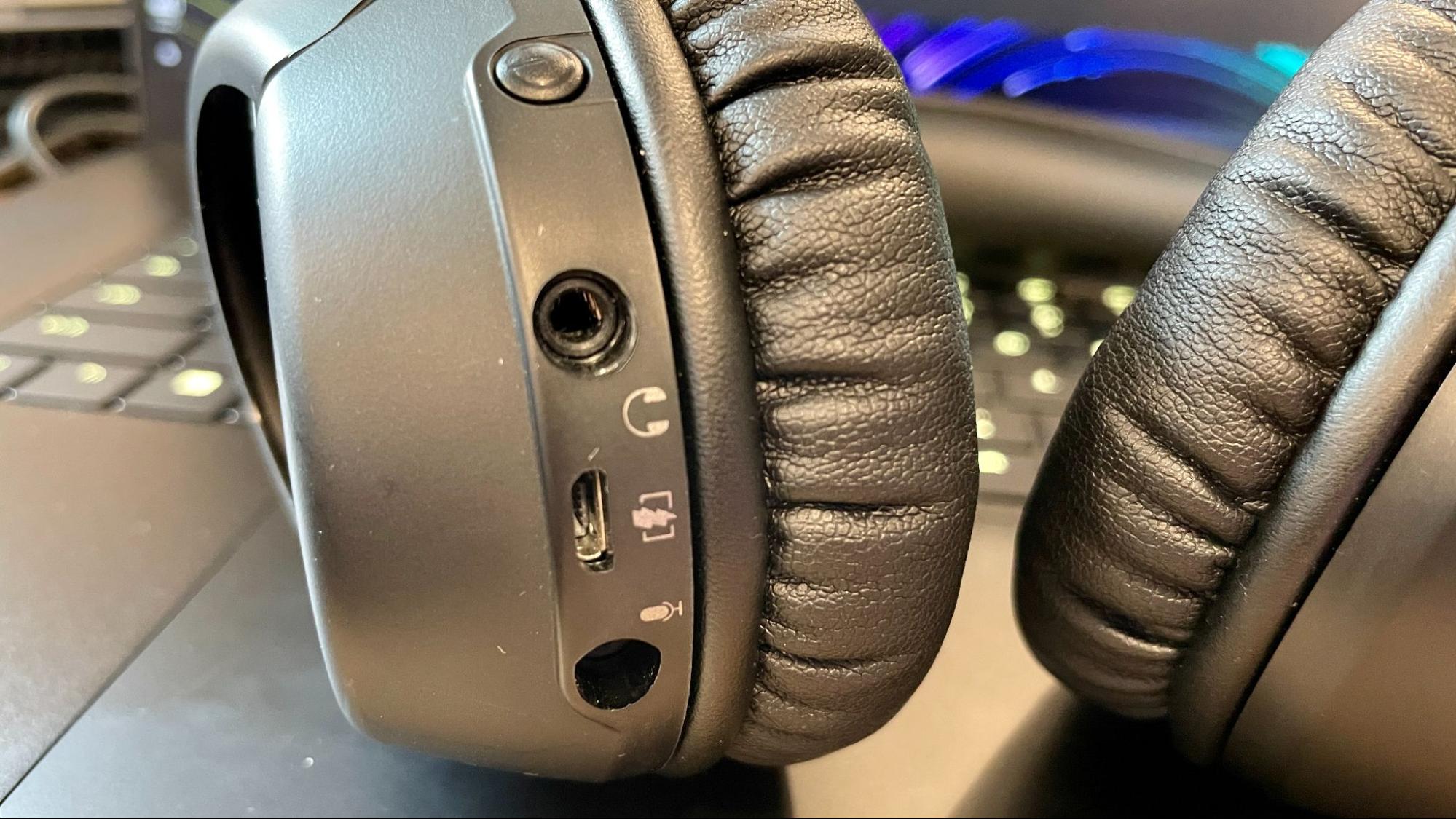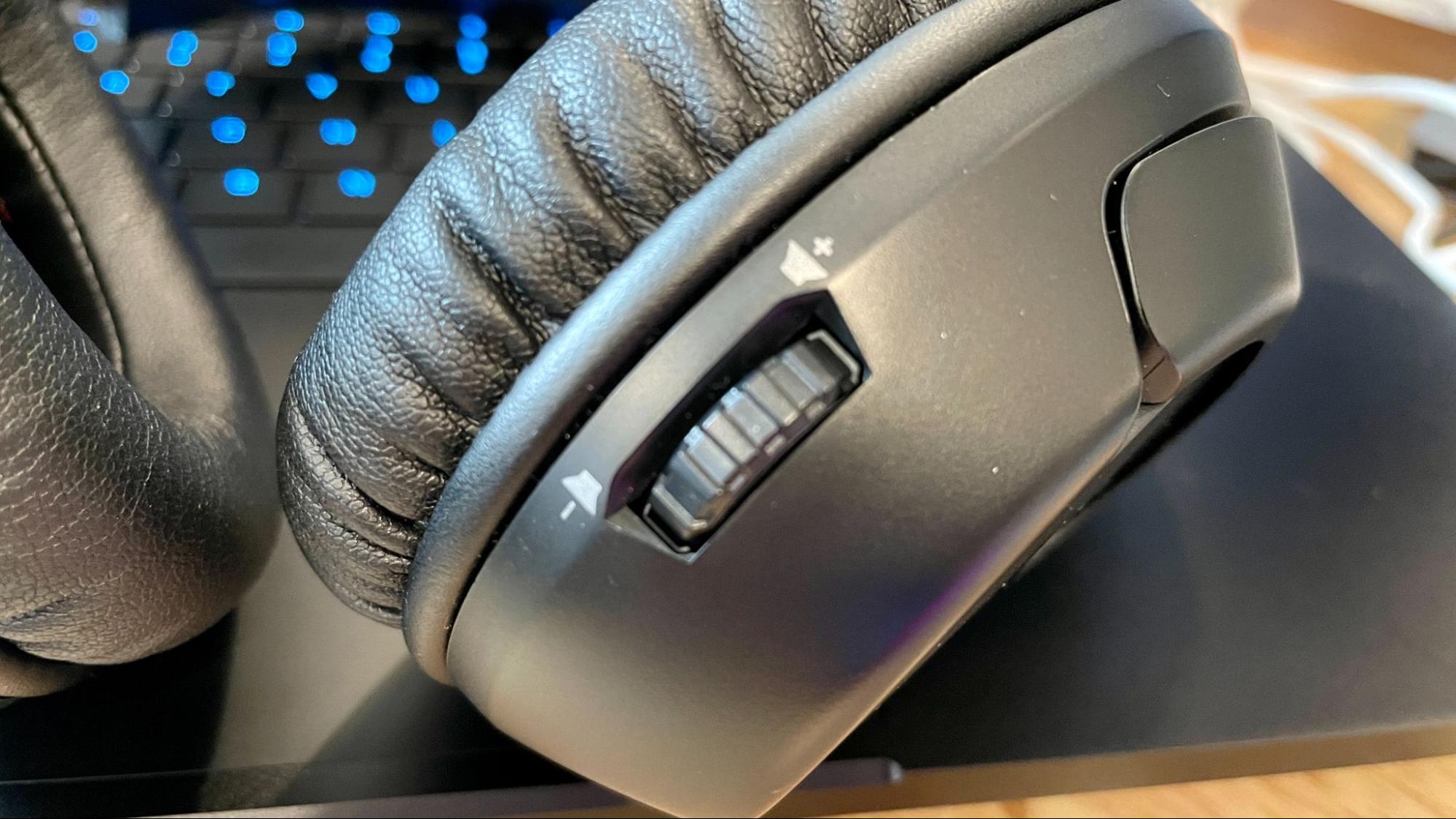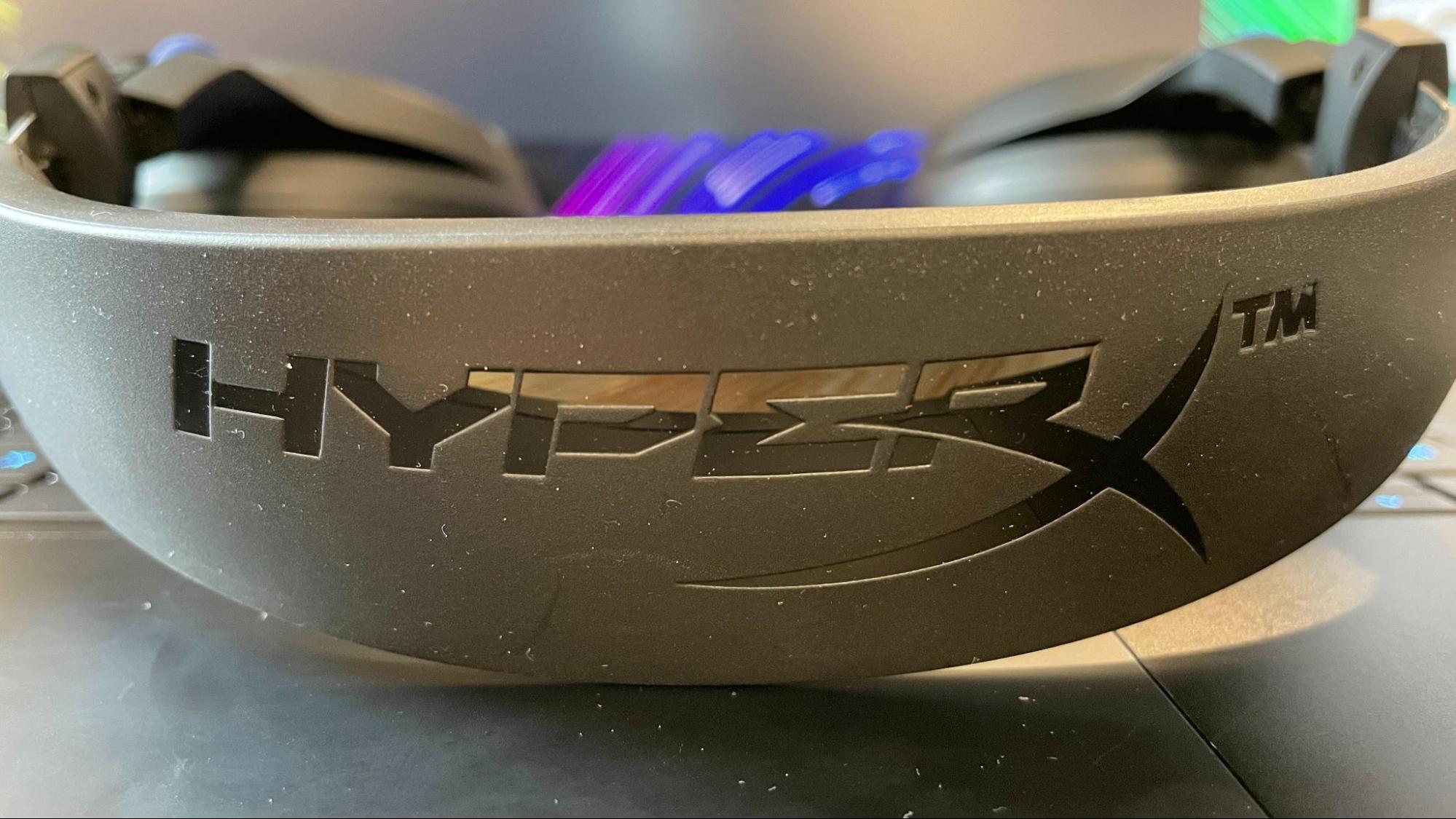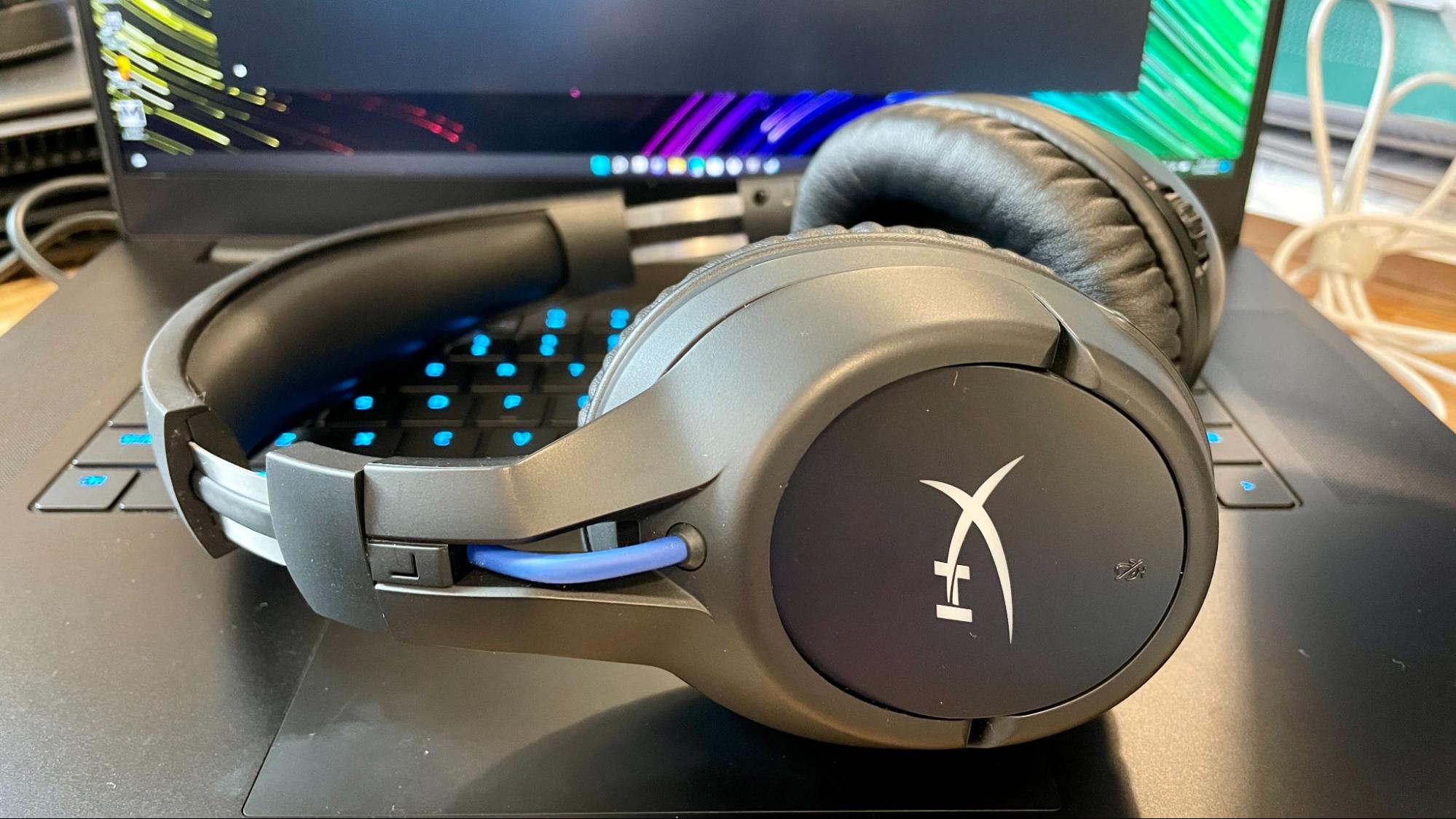Tom's Hardware Verdict
The HyperX Cloud Flight Wireless delivers comfort with over 30 hours of battery life. Unfortunately, the audio quality varies between platforms. And the materials the company used could better.
Pros
- +
+ Great battery life
- +
+ Low-key design
- +
+ Comfortable cushions and headband
Cons
- -
Sound quality varies between platforms
- -
Plastic shell feels cheap
- -
3.5mm headphone cord not included
- -
No Software
Why you can trust Tom's Hardware
HyperX returns with a new update to the wireless edition to the Cloud Flight family, that promises enhanced Playstation support and over 30 hours of battery life. This comes after the Cloud Flight S, which saw the product line go wireless and introduce QI charging for the first time. We could not justify its initial price of $160 just for those two new inclusions, but this version of the Cloud Flight Wireless is more competitive at $120.
True, you’ll lose the gimmicky QI charging and NGenuity software support here, but you will get some classy RGB lighting in the earcups.
PC and PlayStation (and Switch, kind of) compatibility are along for the ride. This, plus its lowkey design, make the Cloud Flight Wireless a solid buy for gaming and office use. However, we have a few gripes with it, such as a lack of dynamic sound across platforms, that keeps the headset from making our best wireless headsets list.
Specifications - HyperX Cloud Flight Wireless
| Driver Type | 50 mm Neodymium |
| Impedance | Unlisted |
| Frequency Response | 20 Hz - 20 kHz |
| Microphone Type | Detachable Bidirectional, noise-canceling |
| Connectivity Options | USB Type-A dongle, headphone jack |
| Cables | Detachable Mic, charging cable |
| Weight | 0.66 lbs |
| Lighting | 2 RGB on Earcups. |
| Software | None |
| Extra | None |
Audio Performance
The HyperX Cloud Flight keeps it pretty simple with its 20 Hz - 20 kHz frequency response. But its 50mm Neodymium drivers are what makes the headset special for console gaming, since the drivers are known for delivering pleasing and immersive audio experiences.
I played a few games on PC first to cover my bases, like Grand Theft Auto V and Shadow of the Tomb Raider. The sound effect quality was so immersive that I forgot it was 15 minutes before quitting time at the office, which is a feat, to say the least. I was sucked into my gaming session the way people get sucked into a movie, a testament to the near-cinematic quality of the sound. In particular, I was really drawn into the opening of Shadow of the Tomb Raider, which has Lara Croft escaping from a collapsing tomb. The thought of being buried alive (a very real fear of mine), coupled with the crunches of rock in my ears, made me repeatedly whisper “nope” under my breath.
When I first used the Cloud Flight for music, I noticed how loud, clean, and isolated the sound was thanks to the headset’s 50mm driver and the memory foam ear cushions. Unfortunately, the cans produce little to no bass and songs lack dynamic sound as a result. I listened to “Deep Down” by Winter Kills and sure, it was loud, but the song lacked thump from the rhythmic kicks and deep bass. From the sound of it, it feels like the headset could produce some range in mids and lows if it had software EQ to toy around with. But unlike the headsets before it, this iteration of the HyperX Cloud Flight does not.
I took time to use the headset while I played Persona 5 Royal on PlayStation 4 to listen for any sound quality differences, and surprisingly I did. When I connected the dongle to the front of the PS4, the headset connected instantly. Other headsets like the Razer Kraken V3 Pro had me shuffling around the settings menu before connecting on its own.
Get Tom's Hardware's best news and in-depth reviews, straight to your inbox.
Once I was connected, I noticed how crisp the clicks sounded as I navigated through the PS4 UI. After the opening cinematics for Persona fired up, I also realized how dynamic the music was. All the kicks had thumps that made the headset rumble on my head. That was a clear difference from when I was listening to music on PC. Even in comparison to when I used it to game on PC, although the sound was refined and immersive, sounds were more dynamic when using the headset on the PS4.
I asked HyperX to explain the difference between audio quality and the company told me the following: “From the hardware side, there isn’t any system-specific EQ for Flight, [so] any differences in audio would be caused on PlayStation.” I take that to mean the headset has been developed specifically with PlayStation consoles in mind first, and so it sounds a little better on those platforms as a result.
I tried to turn the music up but got some beeps inside the cans from the PS4 indicating the volume could go up no further. This is disappointing, especially since the headset gets louder when connected to other devices. When gaming on the PS4, I realized just how long the USB dongle is. It’s the size of a flash drive, which doesn’t bother me when on PC, but was rather intrusive on the console. I always had a fear I’d bump into it while moving back and forth from my gaming area.
Design and Comfort of HyperX Cloud Flight Wireless




The design of the HyperX Cloud Flight Wireless doesn’t stray too far from previous iterations, and that’s mostly a good thing. The headset is black and the microphone is detachable, which is good if you decide to also use it on mobile devices via its 3.5mm headphone jack. Regrettably, a cord to use the jack is not included in the packaging. When used through the wireless adapter, both logos on either side of the earcups strobe with a blue hue by default. But the lighting can be turned off to help battery life.
The light meshes well with the blue wiring that connects from the cans into the headband. But it would be great to be able to customize the color at your discretion. There’s a blue light in the wireless adapter that will also strobe to indicate the headset’s low battery. When you push in on the left earcup, you can mute the microphone, which will then produce a red ring around the mouthpiece.
The headset itself feels pleasant on the head and around the ears thanks to the plush leatherette and memory foam cups. The earcups can also rotate 90 degrees to the left or right to give your ears a break or to help you listen to your surroundings, which comes in handy. But during my time with this headset, I never felt the need to give my ears a break during extended use, because the earcups were so light and comfortable. Despite the comfort, the Cloud Flight Wireless utilizes a metal frame, which exposes itself when adjusting the headband. It’s reminiscent of those retro headphone bands that would get caught in your hair. Thankfully though, that didn't happen with these headphones.
However, the plastic used for most of the shell of the headset feels hollow and cheap, like it wouldn't stand up well to repeated drops without cracking or snapping. The quality issue was made even more apparent when I got my hands on the more expensive HyperX Cloud Alpha Wireless ($199.99), which utilizes a pebblestone leatherette, threaded wiring, and steel material instead of plastic. But of course that headset costs substantially more.
Comfort is a necessity in order to enjoy up to 30-hours of battery life, and that longevity is one of my favorite things about this headset. Fresh out of the box, without a charger, the Cloud Flight Wireless lasted over four full workdays before I had to charge it. As of this writing, I go into the office twice a week, so I had roughly 32 hours of power before the headset died. I didn’t even have the RGB turned off in order to preserve energy, which is impressive. I wanted to drain the battery again in order to see how long a full battery would last, but after a few days, I was convinced I’d finish my review before it ever died. After two weeks and four office days, the headset finally started beeping, signifying its approaching demise. But the cans didn’t officially kick the bucket until the end of the day. The headset automatically turns off after a few minutes of inactivity, and I’m sure that helped in keeping the headset alive for so long.
Compatibility
The HyperX Cloud Flight Wireless utilizes a 2.4Ghz USB dongle for wireless connectivity. This USB dongle can be attached to PCs, PlayStation 4, and PlayStation 5 without a hitch. You can also use the dongle on a docked Switch to play wirelessly. However, folks will have to utilize a 3.5mm headphone connection when playing in handheld mode. The analog wire is mostly needed to use this headset with mobile devices, as there are no Bluetooth options available.
I wish compatibility weren't as scattered across the range as it is. The HyperX Cloud Flight range has three iterations, not including the Cloud Flight Wireless. All three have varying compatibility between consoles. The original Cloud Flight can be used for PC and PS4, while the CloudX Flight can only be used for the Xbox One. The previous Cloud Flight S is compatible with PC, PS4, and PS4 Pro. It’s a hassle to find out which headset is the correct one for your system because of this. I hope HyperX does better consolidating compatibility in its next range of headsets.
Microphone

I hopped on a call with a colleague with the microphone attached to the headset. I was told that the quality was very average from the other end. It didn’t sound like anything special, and if I hadn’t told them I was testing a product, he would have thought it was a standard laptop mic.
The detachable bi-directional microphone has a built-in noise-canceling function, so I tested it in the office. In playing the recording back, I couldn’t hear a thing from the folks around me talking. I was rather impressed by this, as the conversation was taking place directly behind me. The mic was able to pick up my whispered voice very well during the convo, even with my face mask off. Unfortunately, there was static behind my voice when I listened to the playback. Although the mic quality is nowhere near close to what the best desktop microphones can produce, it’s a solid option for voice meetings and chatting over PS4.
Bottom Line
The HyperX Cloud Flight Wireless is a great mid-range option for gaming, especially as a PlayStation alternative to SteelSeries’ Arctis 7P+. The Flight Wireless has a similar PlayStation aesthetic thanks to its black and blue colorway, but can also blend into an office environment more than the Arctis’ color scheme. Its bi-directional microphone also makes HyperX’s Cloud Flight a more than a serviceable option to use during work. And thanks to its long-lasting battery life, gamers and office workers alike won’t have to worry about charging it until the end of the week in most cases.
The HyperX Cloud Flight Wireless brings gaming to life, but is optimized to sound better on PlayStation consoles. The range of sound the cans delivered during my time with the music-heavy Persona far exceeded the dynamics I heard when listening to regular playback over PC. The inclusion of software could possibly make this a non-issue. But alas, HyperX NGenuity support is not compatible with this device.
Although I've got gripes over the different qualities of sound across platforms, the headset’s 50 mm Neodymium drivers keep audio refined nonetheless. And despite its cheap plastic and lack of software, the HyperX Cloud Flight Wireless is competitively priced, making it a decent mid-range option.

Isaac Rouse is a staff writer at Tom's Hardware. He reviews laptops and various gaming peripherals.
-
kep55 These headphones remind me of the Radio Shack units I bought in 1978. Except they came with a cord.Reply
